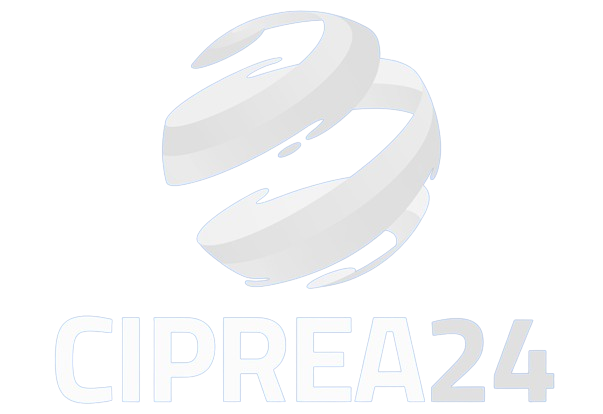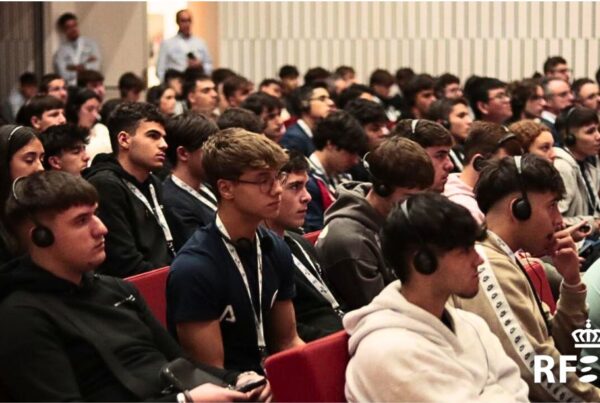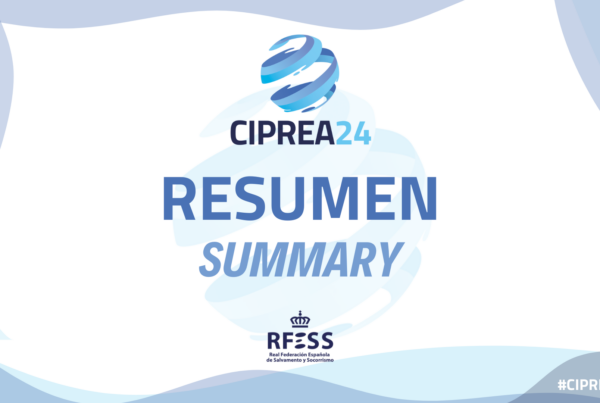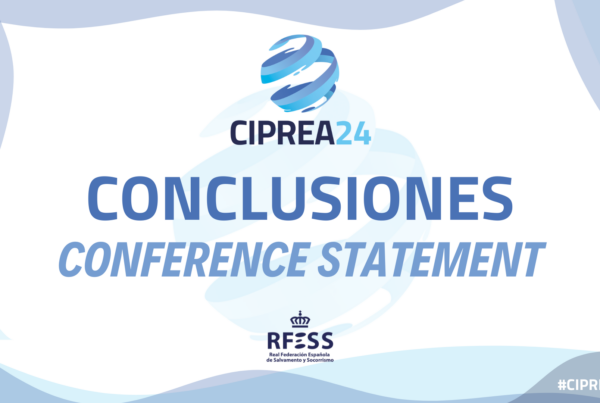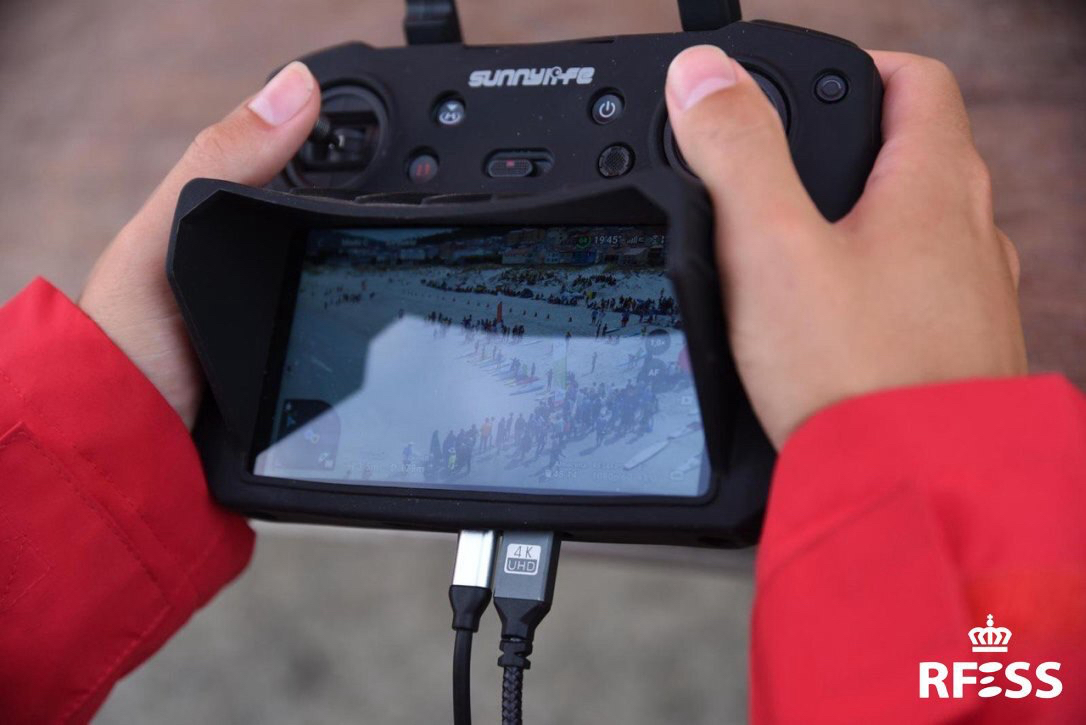
An operator flies the drone and follows the image from the screen at a beach competition. Author: Javier Sánchez-RFESS
Six technicians and athletes will develop a project to improve sporting performance in lifesaving and lifeguarding
Will explain the technical and tactical aspects of different tests at the CIPREA, which will be supported by audiovisual capture in competition
Six top-level technicians and sportsmen and women will be responsible for developing the tactical and technical analysis of different lifesaving tests and gestures as part of a project to improve sporting performance, which will be supported by the audiovisual recording of competitions, both in the swimming pool and on the beach, which have been carried out over the last two seasons.
The initiative has been developed under the coordination of the Sports Director of the Royal Spanish Lifesaving Federation, José Miguel Rodríguez Ferrero, since January 2024, through the analysis of the recordings made in the championships of the national calendar and with the possibility of accessing the extensive audiovisual archive of competitions that RFESSMedia, the only multi-device television dedicated to lifesaving and lifeguarding in the world, has at its disposal.
The project, financed by the Consejo Superior de Deportes under the Recovery, Transformation and Resilience Plan, will be exhibited at the fourth edition of the International Congress on Drowning Prevention (CIPREA), which begins next Friday and will bring together in Cordoba until Sunday more than three hundred people, of which fifty are experts, from a wide range of disciplines.
Precisely, the six specialists who will be in charge of the technical development present communications in the field dedicated to sport at CIPREA, referring to each of the aspects included in the project.
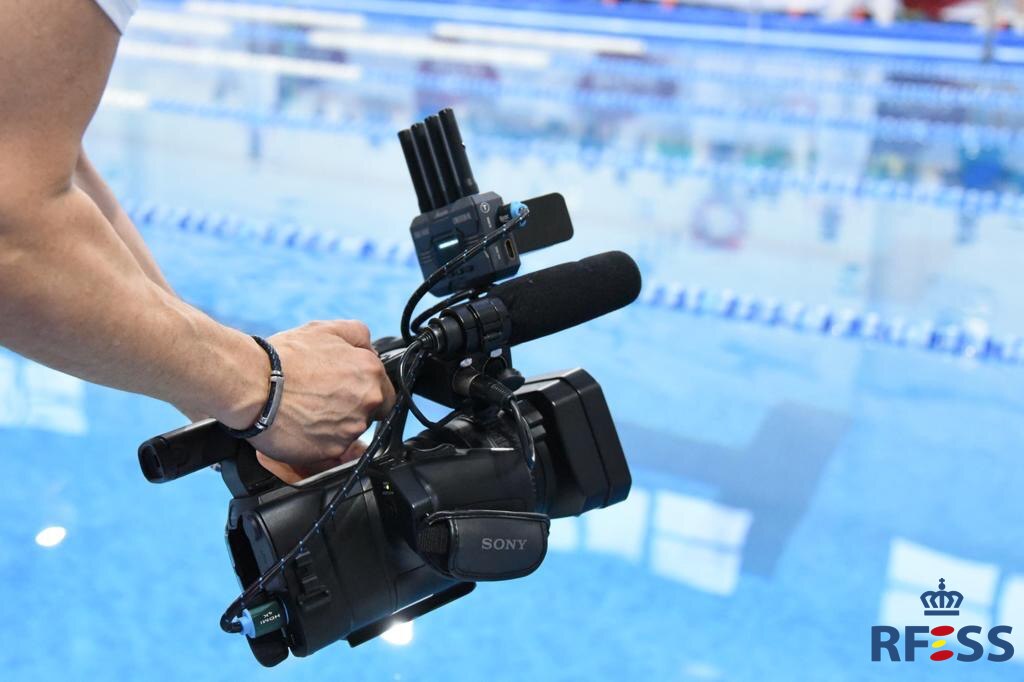 Shot with a wireless camera at a swimming pool competition. Author: Javier Sánchez-RFESS
Shot with a wireless camera at a swimming pool competition. Author: Javier Sánchez-RFESS
Communications at CIPREA
These are Iván Cazorla Rey (lifesaver board test), Nacho Gil Ruiz (rescue tube and fins set-ups of the pool tests), Lara Gómez García (sprint test), Óscar Vaquero Pérez (lifesaver ski test), Marco Plazuelo Jiménez (flag test) and Mikel Escalona Fernández (manikin set-ups and exits of the fins tests).
The technical and tactical analysis will be carried out based on the recordings of the competitions of the national calendar. This will be carried out both for the basic sport events and the high level pool and beach events in order to collect data that will allow information to be obtained not only on the technical execution that will facilitate the description of execution models, but also on the evolution of the technique throughout the different categories of lifesaving and lifeguarding.
Application for the analysis of kinematic parameters
Another line of execution of the project is the development of an application that will make it possible to carry out a general analysis of all the kinematic parameters that can influence the final performance, in order to create ideal performance models that can be used by coaches in their daily work with the athletes, as well as to identify possible sporting talents.
This project joins other studies carried out with members of the national team in collaboration with other entities, such as the Analysis of lactate levels in lifesaving and lifeguarding through the design of a specific test for 100m lifeguarding, the results of which have been published in the Revista de Investigación en Actividades Acuáticas; the Biomechanical analysis of specific lifesaving and lifeguard gestures, developed in the flow pool of the Tenerife Top Training sports centre; or the Kinematic analysis of specific lifesaving and lifeguarding tests, which was carried out through the filming of partial tests in the facilities of the Sierra Nevada High Performance Centre.



